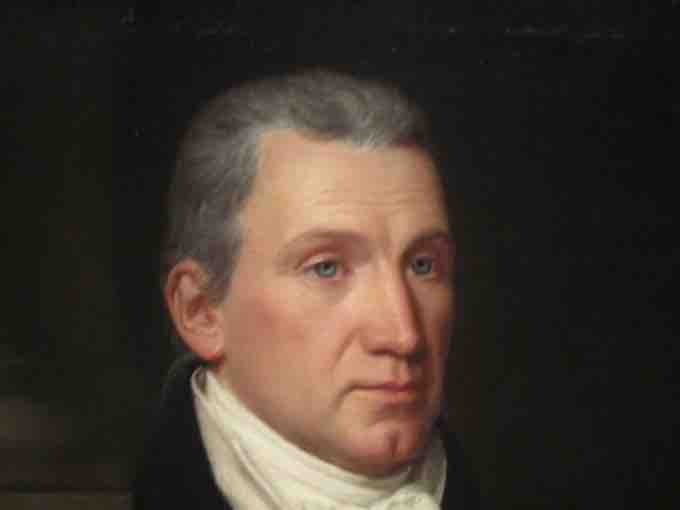The Election of 1816
The U.S. presidential election of 1816 came at the end of the two-term presidency of Democratic-Republican, James Madison. With the Federalist Party in collapse, Madison's secretary of state, James Monroe of Virginia, had an advantage in winning the presidency against very weak opposition. Monroe won the electoral college by the wide margin of 183 to 34.
Monroe was the favorite candidate of both former President Jefferson and retiring President Madison. However, Monroe initially faced stiff competition from Secretary of War William H. Crawford of Georgia. There was also widespread sentiment, especially in New York, that it was time to end the dynasty of Virginian presidents (both Jefferson and Madison also had been from Virginia). Monroe's long service at home and abroad, however, made him a fitting candidate to succeed Madison. Crawford never formally declared himself a candidate because he believed he had little chance against Monroe and feared such a contest might deny him a place in the new cabinet. Still, Crawford's supporters posed a significant challenge during the election.
Highlights of Monroe's Presidency
The "Era of Good Feelings"
Monroe largely ignored old party lines in making appointments to lower posts, which reduced political tensions and engendered an "Era of Good Feelings" that lasted throughout his administration. He made two long national tours in 1817 to build national trust. Frequent stops on these tours allowed innumerable ceremonies of welcome and expressions of good will. The Federalist Party continued to fade away during his administration; it maintained its vitality and organizational integrity in Delaware and a few localities, but was no longer a factor in national politics. Lacking serious opposition, the National Republican Party's congressional caucus stopped meeting, and for practical purposes, the National Republican Party stopped operating.
Domestic Troubles: The Panic of 1819 and the Missouri Compromise
During Monroe's presidency, the country's commitment to nationalism was starting to show serious fractures. The Panic of 1819 caused a painful economic depression, and an amended bill for gradually eliminating slavery in Missouri precipitated two years of bitter debate in Congress. The Missouri Compromise bill resolved the struggle, pairing Missouri as a slave state with Maine as a free state and barring slavery north of latitude 36°30′ north. The Missouri Compromise lasted until 1857 when it was declared unconstitutional by the U.S. Supreme Court as part of the Dred Scott decision. Despite these domestic tensions, Monroe's popularity remained undiminished.
The First Seminole War and Spanish Florida
Monroe sparked a constitutional controversy in 1817 when he sent General Andrew Jackson to move against Spanish Florida to attack the Seminole Indians and punish the Spanish for aiding them. This action sparked the First Seminole War. Relations with Spain over the purchase of Spanish Florida also proved to be troublesome. In the end, largely through the skillful work of John Quincy Adams, a treaty was signed with Spain in 1819 that ceded Florida to the United States in return for the assumption of $5,000,000 in claims and the relinquishment of any claims to Texas. Florida was ceded to the United States in 1821.
Monroe Doctrine
The Monroe Doctrine was a U.S. policy introduced by Monroe on December 2, 1823, which stated that further efforts by European nations to colonize land or interfere with states in North or South America would be viewed as acts of aggression requiring U.S. intervention. The doctrine was issued at a time when nearly all Latin American colonies of Spain and Portugal had achieved independence from the Spanish Empire (except Bolivia, which became independent in 1825, and Cuba and Puerto Rico). The United States, working in agreement with Britain, wanted to maintain its foothold and to guarantee no European power would move on these newly independent countries. Despite its own drive to colonize lands for itself, the United States proclaimed that the Americas should be free from future European colonization and free from European interference in sovereign countries' affairs.

President James Monroe
This portrait of James Monroe can be found in the National Portrait Gallery in Washington, D.C.